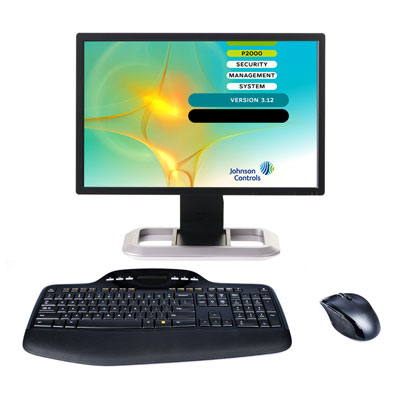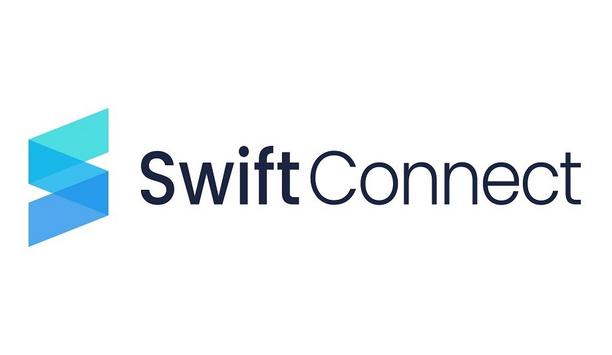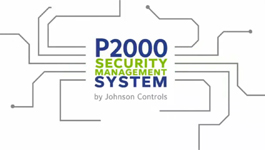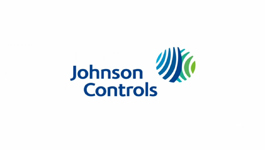Since it assumed charge of the airport in 1996, GTAA has relied on Johnson Controls to operate and maintain the heating, ventilation and air conditioning (HVAC) systems that ensure comfortable conditions for passengers and employees. More recently, Johnson Controls has expanded its role to include installation of a new Web-based Metasys® building management system along with a state-of-the-art security system in the brand new Terminal 1.
The relationship has helped GTAA operate the airport according to its four Business Cornerstones: environmental sensitivity, financial responsibility, safety and security, and customer service.
Major improvements
Since it replaced Transport Canada as Pearson’s operating entity, GTAA has moved aggressively to improve the facilities and enhance service to travelers. The centerpiece of the development program is the $3.3 billion Terminal 1, which will replace two existing terminals with one world-class facility catering to travelers’ needs. The terminal offers stunning architecture with soaring spaces, abundant natural lighting, and numerous shops and restaurants. It is designed to give travelers a pleasant experience and to provide a comfortable environment for GTAA and airline employees. When finished in 2012, Terminal 1 will include a gross floor area of 82 acres, 258 check-in counters, a baggage-handling system with 15 kilometers (9 miles) of conveyor able to handle 18,000 bags per hour, and a parking garage with 12,600 spaces.
Johnson Controls, which has handled HVAC operations and maintenance at Pearson for nearly 30 years, is installing a new security system in Terminal 1 that includes CCTV and card access for airport and airline personnel. The CCTV system uses video over IP technology, giving fully flexible access to the facility’s 700 cameras in groups of up to 40 at a time.
"Lighting management lets us use natural light to the fullest extent possible without creating inconvenience for our staff" |
The security network, integrated with the airport-wide Metasys system, can be expanded and upgraded for growth, changes in government regulations and advances in technology. Johnson Controls trained airport staff to operate the system and provides maintenance under a service contract.
Creating the experience
All told, Johnson Controls serves 31 buildings at the airport, comprising 9.7 million square feet. The Metasys system monitors and controls some 60,000 points. Indoor comfort is a GTAA priority. “We are very conscious of keeping a pleasant environment with good air quality and with temperature and humidity held at comfortable levels,” says Mike Riseborough, General Manager of Buildings and Facilities Maintenance for GTAA.
“It’s extremely important that we keep passengers focused on their primary purpose, which is travel. When they pass through the airport, we don’t want them to be encumbered in any way by the facility. We want them to leave not remembering being too warm or too cold, but remembering the architectural splendor of the buildings and having a generally enjoyable experience. Employee comfort is equally important,” says Riseborough.
Maintaining comfort is challenging in a facility with large open spaces, glass exteriors and virtually constant in-and-out traffic. The HVAC system throughout the terminals and ancillary facilities, including the parking structures, is controlled by the Metasys system, which provides a single-seat interface for monitoring and regulating multiple functions. This system operates on a campus wide-area network (WAN) configured as a dual-redundant fiber optic ring. Management and other authorised personnel can access the system from a central workstation or from their offices and from off-site, by way of the airport intranet.
“The building management system is essential to our ability to maintain a comfortable environment at a reasonable cost,” says Brian Lackey, Vice President of Operations and Chief Engineer with GTAA. “Our buildings are big, bright and airy, and even in winter the doors are open almost as much as they are closed because people need access to the facilities. For those reasons, it is a challenge to maintain consistent conditions.”
Broad integration
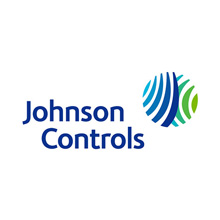 |
| Johnson Controls metasys system monitors and controls some 60,000 points |
The Web-based Metasys system is programmed to integrate numerous functions, and GTAA takes increasing advantage of the integration as its building program moves ahead. For example, integration with the Air Traffic Information Management System (ATIMS) provides the opportunity to save energy and enhance traveler comfort by controlling fresh air intake, heating, cooling and lighting automatically in accord with arrivals and departures.
“The ATIMS provides data such as which gates are in use and how many passengers are slated for a given space at a given time,” says Riseborough. “Based on that, we can manipulate heating and lighting in response to passenger movements.”
The system also integrates lighting management, an important function on a campus with annual electric bills totaling $18 million. “Lighting management lets us use natural light to the fullest extent possible without creating inconvenience for our staff,” Riseborough says.
Lighting can be adjusted or switched off automatically based on natural lighting levels, building schedules, ATIMS information and other factors. Riseborough reports that the program saved an estimated $1 million in electricity in 2004 and is projected to save $1.5 million in 2005.
The ramp services management system (RSMS) also integrates with Metasys, enabling airport staff to monitor passenger boarding bridge functions including drive systems, ground power for aircraft, air conditioning and heating, and potable water. This enables quick detection of trouble and prompt response and troubleshooting. Other Metasys system integrations include:
Central utility plant. Communication between the boiler and chiller plant and the Metasys system helps staff manage the flow and distribution of energy throughout the campus.Fire alarms. The HVAC system responds automatically to alarms, pressurising stairwells, shutting off fans and evacuating smoke in appropriate areas. As the alarm is stood down, systems return to normal operation in a programmed sequence, preventing sudden power draws.
Power management and control system (PMCS). This system monitors power consumption and detects anomalies. It has potential to support GTAA efforts to shed electric load during times of high on-peak energy prices and to direct dispatch of a cogeneration system (now under construction).
"We are very conscious of keeping a pleasant environment with good air quality and with temperature and humidity held at comfortable level" |
Vertical and horizontal transportation management systems. Integration with Metasys tells staff the status of power walks, escalators and elevators. Fault diagnostics help technicians decide whether a device that has shut down can be safely restarted or should first have a mechanical inspection.
The system also monitors and reports the status of pumps and variable-frequency fan drives, triggering alarms and identifying faults.
Proactive maintenance
Johnson Controls operates and maintains the HVAC system with 35 technicians under a comprehensive service agreement. Their service has been essential during the development program, according to Lackey.
“One of our key challenges has been to maintain a stable operation during the construction,” he says. “We are executing a $4.4 billion development program on top of an operating airport. Keeping the facility safe and secure is our first priority, and Johnson Controls supports us very effectively in that area. They are also instrumental in sustaining facility operations and the communication links between our various buildings and the Airport Operations Control Center.”
Maintenance schedules are based on the calendar and on equipment histories. A computerised maintenance management system automatically tracks maintenance activity. GTAA staff evaluate the service based on facility comfort, equipment uptime and quality of response.
“We monitor on a regular basis how many trouble calls we receive, and we consider that an indicator of how well the maintenance is being done,” Lackey says. “Over the past three years, we have seen a significant drop in trouble calls. That speaks to the fact that we are building a number of new facilities, and also to the level of maintenance we are receiving.” At present, Johnson Controls targets a ratio of 80 percent planned maintenance calls to 20 percent trouble calls (including hot/cold complaints). A few years ago, that ratio was 60-40.
Trusted resource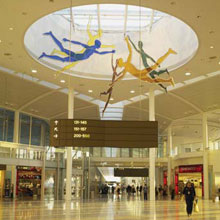 |
| Johnson Controls operates and maintains the HVAC system with 35 technicians under service agreement |
On a daily basis, Johnson Controls staff members recommend ways to improve operating performance, enhance comfort, and increase critical equipment reliability. For example, the company helped GTAA resolve comfort issues in the apron tower, a two-level facility with 1,200 square feet of essentially open space on each level.
“With 360 degrees of glass exterior, the tower has huge solar and exposure issues,” says Riseborough. “We asked Johnson Controls to see whether the equipment we had installed was appropriate for the application. They quickly found that the control and mechanical systems were adequate to supply the space. It was just a matter of setting it up properly and getting it to work the way it should. They devised a system with eight zones that allows us to have sectored control, and it has worked well.”
GTAA also relies on Johnson Controls for advice in resolving special challenges. “When we have a difficult problem, we know that all that’s really required is for us to make one call,” Riseborough says. In 2004, when Environment Canada undertook a Federal Halocarbon Regulation Compliance Audit at GTAA, Johnson Controls stepped up to help develop a refrigerant management program.
“They worked with us to ensure that the entire facility was in complete compliance with the latest regulations,” Riseborough says. “To a large extent, it was an inventory and reporting validation exercise. There were legacy systems such as small refrigeration units that required accurate and concise documentation to be established. Johnson Controls put everything into inventory, and created a system for reporting everything to the government.”
Riseborough also cited Johnson Controls for its diligence in operating and maintaining the preconditioned air (PCA) units that heat and cool idle aircraft. “Those systems are critical,” Riseborough says. “They are connected to the aircraft at 10 at night, and then everybody goes home. The aircraft sits there until it flies out at 6 or 7 in the morning. If it’s minus 35 degrees outside and the wind is blowing, those systems had better keep running.”
Looking ahead
Lackey and Riseborough expect the GTAA relationship with Johnson Controls to continue evolving as the airport development program goes forward. “From our perspective, quality operation of the airport is vital, and we view the support we get from Johnson Controls as very valuable,” Lackey says. “They have excellent people on the ground here, and they have always been responsive to any issues we’ve had. I would hope that in the future our relationship will only get better and stronger.”
Find out the state of adoption, trends and opportunities with Artificial Intelligence (AI) in physical security.


